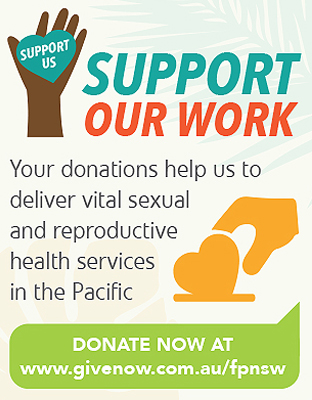Female (Internal) Condom
What is a female condom?
There are two types of condoms:
- female condoms (internal condoms) which are worn inside the vagina
- male condoms (external condoms) which are worn on the outside of the penis
Female condoms are an alternative to male condoms as a barrier method for safe sex and contraception. They are worn during vaginal sex to prevent semen (the fluid that contains sperm) getting to the uterus. Condoms are the only contraception that prevent both pregnancy and sexually transmitted infections (STIs).
The female condom sold in Australia (FC2) is a thin, soft, nitrile pouch which you put in the vagina before sex. It is 17 cm long and has two flexible rings, one at each end - the inner and outer ring. The inner ring is closed and rests inside the vagina. The outer ring is open, and stays outside the vagina, pushed flat against the labia (folds of skin on outside of the vagina, also sometimes called 'lips'). The outer ring acts as an anchor to stop the condom from being pushed inside the vagina during sex. Just like the male condom, each female condom should only be used once. You should use a new one each time you have sex.
How does the female condom work?
The female condom covers the cervix, lines the vagina and protects the vulva (entrance to the vagina) providing a barrier between the penis and the vagina. It stops the exchange of body fluids (semen and vaginal fluids). The female condom is already lubricated - extra lubricant can be used if desired.
How effective is the female condom?
The female condom is at least as effective as the male condom at preventing STIs. When used correctly it is up to 95% effective at preventing pregnancy but in real life this can be lower at around 79%. Female condoms can be used at the same time as other methods of contraception including contraceptive pills, vaginal rings, contraceptive injections, implants and IUDs. It can't be used with a male condom.
If you think your female condom hasn't worked, for example if it becomes dislodged during sex, or you forget to use one, the emergency contraceptive pill is available from pharmacies. Please see our emergency contraception factsheet for more information.
If you are at risk of STIs it is important to seek advice about STI testing. If you think you are at risk of HIV, PEP (postexposure prophylaxis) can lower the risk of HIV transmission.
Advantages
- it is a safe short term method of contraception
- it can be bought without a prescription
- it provides protection against STIs
- it can be put in any time before sex
- it can be used with any type of lubricant e.g. water-based, silicone-based or oil-based lubricants
- it can be used by people who are allergic or sensitive to latex condoms
- the material is good at warming up, which may make sex more enjoyable
- the outer ring may stimulate the clitoris making sex more pleasurable
- it lines the inside of the vagina so the penis does not have to be erect and may not need to be withdrawn immediately after ejaculation
Disadvantages
- it has a higher failure rate than some other methods of contraception
- some people find it difficult to insert and remove
- it's not as widely available as the male condom
- it's more expensive than the male condom
Who can use the female condom?
It's suitable for most people and is designed to fit all vaginas.
How do I use the female condom?
Detailed instructions are available on the product website - www.fc2femalecondom.com/how-to-use/
To insert the female condom:
- hold the inner ring (the closed end of the condom) and squeeze the edges of this ring together
- put this end as far as possible into the vagina - when you let it go, the ring will open to hold the condom in place
- with your fingers inside the condom, push it up into the vagina
- the outer ring should remain outside the vagina, resting against the labia
- be sure that the condom is not twisted
- guide the penis into the vagina during sex to make sure the condom stays in place
To remove the female condom:
- after sex, twist the outer ring and pull the female condom out
- wrap it in some tissue and put it in a rubbish bin
- don't flush it down the toilet

Remember:
- make sure the outer ring stays outside the vagina (on the vulva)
- make sure the penis is in the condom and not between the condom and the vagina
- it can only be used once - use a new one each time you have sex
Where can I buy the female condom?
You can buy female condoms online and from Family Planning NSW clinics. Some women's health clinics and pharmacies also stock them.
For more information
FC2 female condom website - www.fc2femalecondom.com
Family Planning NSW Talkline - www.fpnsw.org.au/talkline or 1300 658 886
National Relay Service (for deaf people) - 13 36 77
TIS National's interpreting service - 131 450
Family Planning NSW factsheet - Emergency Contraception
Visit your nearest Family Planning NSW clinic - www.fpnsw.org.au/clinics
Family Planning NSW client resource on contraception - What suits me?


